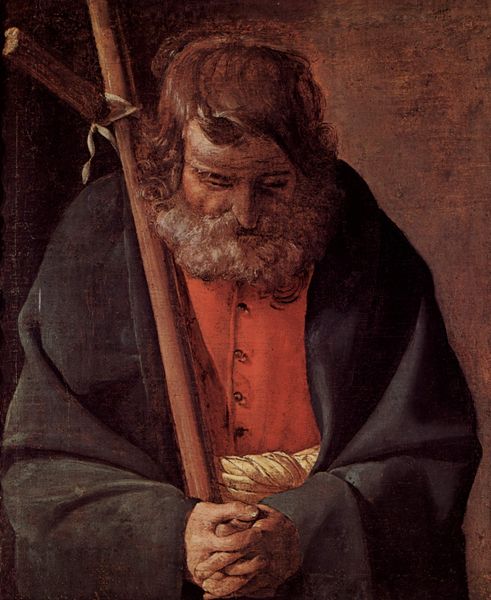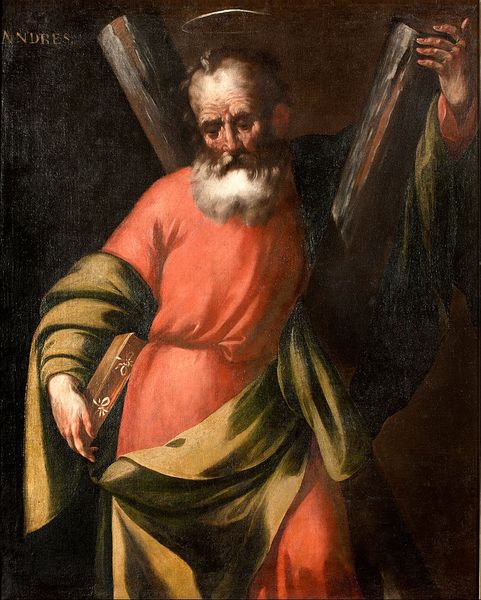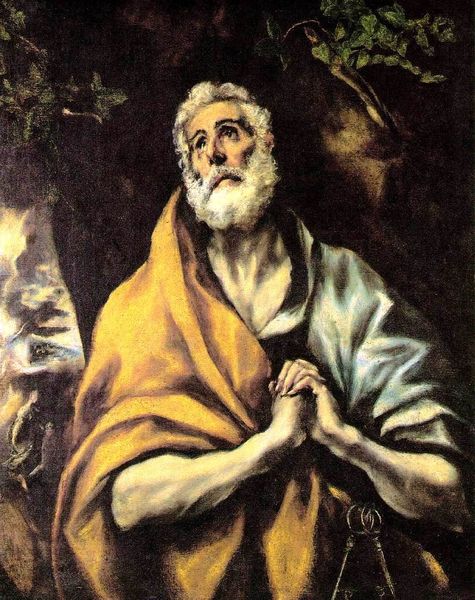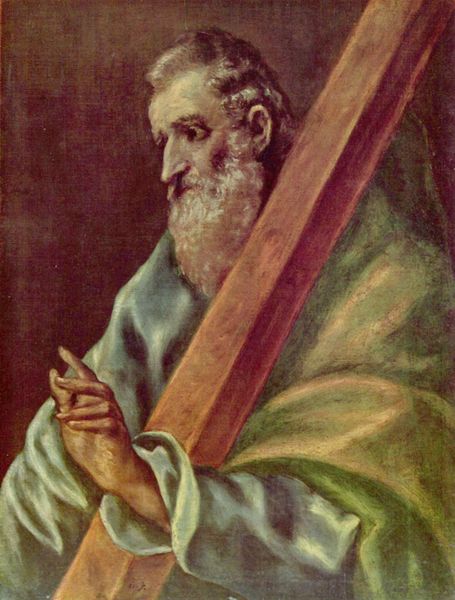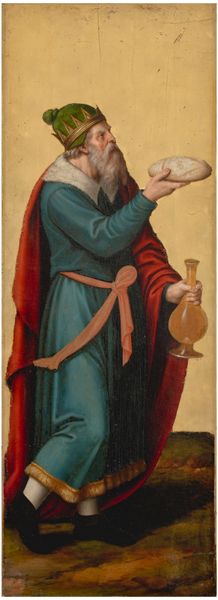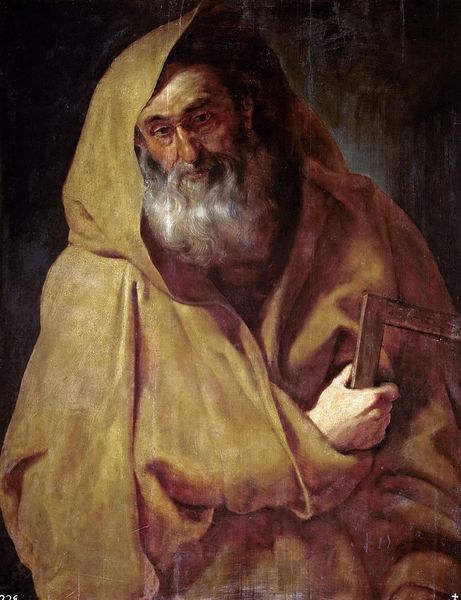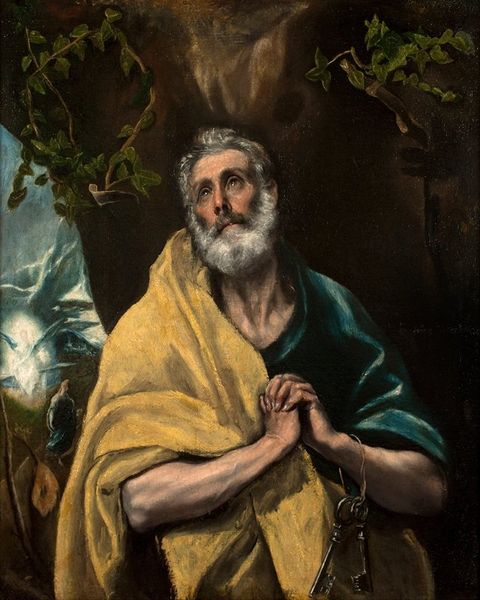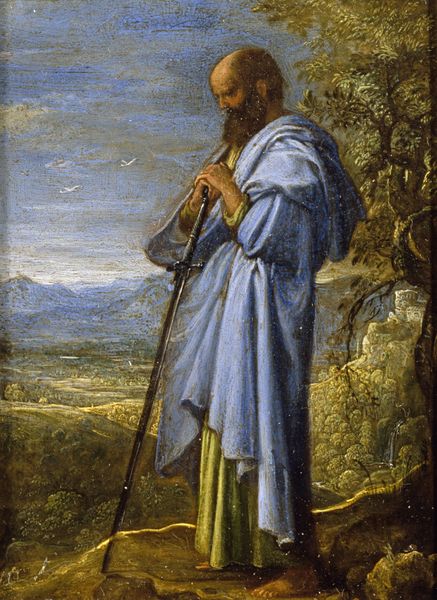
Copyright: Public domain
Curator: Cranach the Elder's “St. Anthony,” painted around 1520 using oil paints, is certainly something. What strikes you most when looking at it? Editor: I'm drawn to how the saint is portrayed amidst a swarm of fantastical creatures. I’m wondering what role the landscape plays in conveying meaning in this piece. What are your initial thoughts? Curator: Well, I'm interested in the conditions of its production and the materials themselves. Consider the oil paint; it wasn't merely a medium, but a commodity traded and imbued with value. How did that material reality shape the composition? Also, observe how the landscape is not merely background but an active element, mirroring the saint's internal struggles. Who was producing such works, and under what social circumstances? What implications might arise when considering landscape as a commodity too? Editor: That's fascinating. So, it's not just about the story, but also the socio-economic forces influencing its creation? What about the choice of Saint Anthony? Curator: Exactly! The choice itself points to a specific patronage and audience, embedded within a religious system that exerted considerable economic and cultural power. Who controlled access to these materials? How did artistic skill translate to social mobility? Was there any significance to using Oil Paints? This is, when we view this historical object critically and ask questions about labor, economic circumstances, and materiality that this painting offers far more depth. Editor: This really provides me with new dimensions to look at, going beyond simply the visual storytelling. Thanks so much. Curator: You’re welcome. Approaching art this way can unlock fascinating new perspectives!
Comments
No comments
Be the first to comment and join the conversation on the ultimate creative platform.

